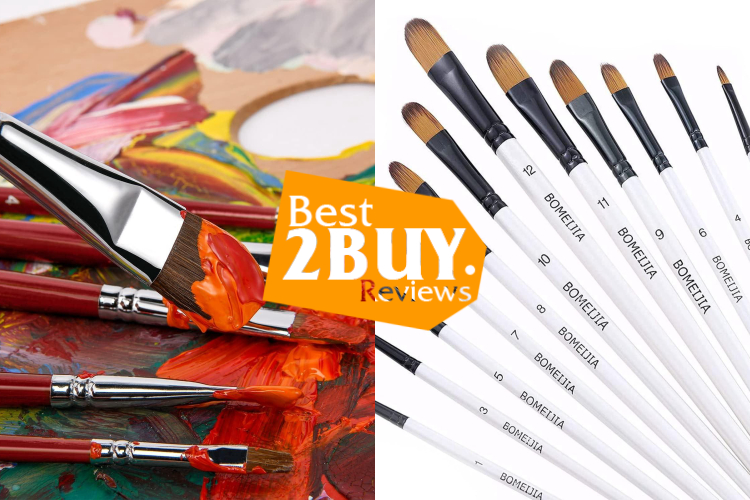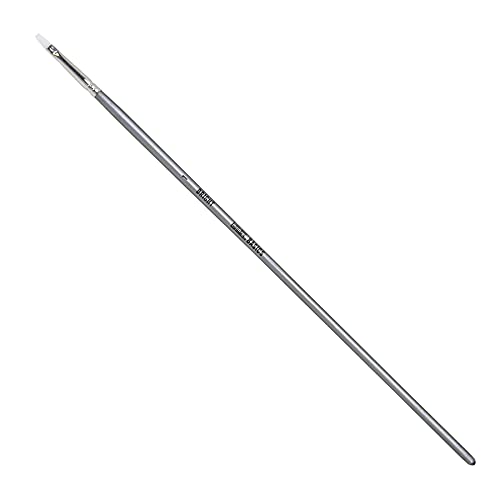Filbert Art Paintbrushes: A Versatile Tool for Artists

- 1. Filbert Art Paintbrushes: A Versatile Tool for Artists
- 1.1. Origins of the Filbert Brush
- 1.2. Characteristics of Filbert Art Paintbrushes
- 1.3. Different Varieties of Filbert Brushes
- 1.4. Factors To Consider When Choosingg Filbert Brushes
- 1.4.1. Bristle Type
- 1.4.2. Brush Shape
- 1.4.3. Size
- 1.4.4. Handle Length
- 1.4.5. Budget
- 1.5. Conclusion
When delving into the realm of art, the choice of tools plays a pivotal role in shaping the outcome of a masterpiece. Among these essential instruments, the Filbert art paintbrush holds a special place. Renowned by artists worldwide for its distinctive shape and adaptability, this article delves into the origins, attributes, and diverse uses of Filbert art paintbrushes, underscoring their indispensable contribution to various artistic mediums.
Origins of the Filbert Brush
The Filbert brush, frequently likened to a cross between a flat and a round brush, boasts a storied heritage tracing its origins to the Renaissance era. Its moniker is drawn from the filbert nut, celebrated for its oval contour. This unique brush design was initially conceived to emulate the look of human hair, which was utilized in brushes in earlier epochs. Thanks to its gently rounded shape and tapered bristles, the Filbert brush empowers artists to execute a diverse spectrum of brushwork, rendering it a cherished instrument within the realm of art.
Characteristics of Filbert Art Paintbrushes
- Shape and Bristles: The hallmark characteristic of a Filbert brush lies in its flat, oval configuration with gently curved bristle tips. These bristles are crafted from a selection of materials, including natural hair, synthetic fibers, or a blend of the two. This distinctive shape and bristle composition grant artists the ability to generate a wide array of brushwork, spanning from fine, delicate lines to broad, sweeping strokes with a simple twist of the wrist.
- Versatility: Filbert brushes are truly versatile tools. They excel in the art of blending and feathering edges, making them especially well-suited for seamlessly merging colors and accommodating various painting techniques like oil, acrylic, and watercolor. Their capacity to produce both crisp, defined lines and gentle, flowing curves renders them an indispensable asset to artists.
- Applications: Filbert brushes find utility in a plethora of artistic endeavors, including portraiture, still life, landscape painting, and abstract art. They are also highly esteemed in techniques such as impasto, where thick layers of paint are applied with bold, expressive gestures.
- Comfort: The ergonomic design of Filbert brushes ensures comfort even during extended periods of use. The rounded edge of the brush affords precise control, reducing hand fatigue and affording artists a heightened level of precision in their work.
Different Varieties of Filbert Brushes
Filbert brushes are available in a range of sizes and materials tailored to the specific requirements of artists:
- Natural Hair Filbert Brushes: Typically crafted from sable, squirrel, or hog hair, these brushes are renowned for their capacity to hold generous amounts of paint and produce gentle, opulent brushstrokes.
- Synthetic Filbert Brushes: Manufactured from synthetic materials, these brushes offer a more budget-friendly and long-lasting alternative. They are ideal for artists who prefer not to utilize animal-derived components.
- Filbert Brush Sets: Many artists opt to invest in a collection of Filbert brushes that encompass various sizes, accommodating a diverse array of painting techniques. These sets often include a blend of both natural and synthetic bristles.
Factors To Consider When Choosingg Filbert Brushes
Choosing the appropriate paintbrush for your artistic endeavors is a pivotal decision that can have a significant impact on the quality of your work. Filbert brushes, known for their versatile shape and bristle type, have become a favored choice among artists, renowned for their capacity to craft gentle transitions and soft edges. When picking a filbert brush, multiple factors must be taken into account, ranging from the bristle type to the brush's size and shape. In this article, we will delve into the crucial elements to ponder when making your selection of filbert brushes.
Bristle Type
- Natural Bristles: Filbert brushes are crafted with natural bristles like hog hair or sable hair. Natural bristles are commonly favored for oil painting due to their durability and their ability to adeptly hold and evenly disperse oil paint. Hog hair filbert brushes excel in applying thick paint and texturing, while sable hair filbert brushes are softer and perfect for delicate artwork.
- Synthetic Bristles: Synthetic filbert brushes are the go-to choice for acrylic and watercolor painting. They offer an economical alternative to natural bristle brushes and are superb for intricate, smooth work. These brushes are also a humane choice for artists who prefer cruelty-free options.
Brush Shape
The defining characteristic of a filbert brush is its rounded, oval-shaped tip. This design empowers artists to create sweeping, curved strokes and achieve soft edges, making it an ideal tool for blending and forming organic shapes. When selecting a filbert brush, take into account the degree of roundness, as some may possess a more pronounced oval shape, while others might be slightly flatter.
Size
Filbert brushes are available in an array of sizes, from minuscule to oversized. Your choice of size should be contingent on the dimensions of your artwork and the level of detail you aim to achieve. Smaller filbert brushes are superb for intricate details, while larger ones are better suited for covering larger areas and executing broader strokes.
Handle Length
Filbert brushes come with handles of varying lengths, ranging from short to long. The handle length can have an impact on your comfort and control during the painting process. Short-handled filbert brushes are often used for detailed work, while long-handled brushes are favored by artists who prefer working at an easel or in a standing position.
Budget
Your budget plays a crucial role in the selection of filbert brushes. High-quality brushes can be quite costly, but they represent a valuable investment in your art. If you're just starting out or working with budget constraints, there are affordable alternatives available that can still yield satisfactory results. Carefully weigh your requirements and budget when making your choice.
Conclusion
The Filbert art paintbrush is a true treasure in the realm of artistry. Its distinctive design, adaptability, and ergonomic design render it an invaluable instrument for artists spanning all levels of expertise and working with diverse mediums. Whether you're a beginner or a seasoned artist, the Filbert brush's capacity to create a diverse array of brushstrokes and its user-friendliness establish it as an essential addition to your art materials.











